Related Research Articles
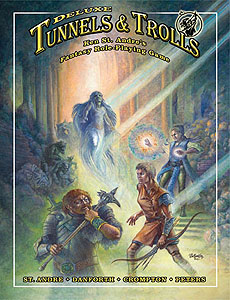
Tunnels & Trolls is a fantasy role-playing game designed by Ken St. Andre and first published in 1975 by Flying Buffalo. The second modern role-playing game published, it was written by Ken St. Andre to be a more accessible alternative to Dungeons & Dragons and is suitable for solitaire, group, and play-by-mail gameplay.

Richthofen's War, subtitled "The Air War 1916–1918", is a board wargame published by Avalon Hill in 1973 that simulates aerial combat during World War I.

Dragon Strike is a 1993 adventure board game from TSR, Inc. based on the Dungeons & Dragons (D&D) fantasy role-playing game. It was intended to be a pathway for beginners to start with, and for players to eventually play the full Advanced Dungeons & Dragons tabletop game after kindling their interest.
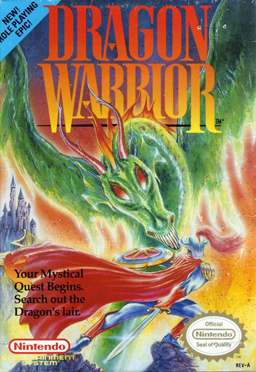
Dragon Quest, titled Dragon Warrior when initially localized to North America, is a role-playing video game developed by Chunsoft and published by Enix for the Nintendo Entertainment System. It was originally released in Japan in 1986 and by Nintendo in North America in 1989. It is the first game in the Dragon Quest video game series. Dragon Quest has been ported and remade for several video game platforms, including the MSX, MSX2, PC-9801, Super Famicom, Game Boy Color, mobile phones, and Nintendo Switch as of 2019. The player controls the hero character who is charged with saving the Kingdom of Alefgard and rescuing its princess from the evil Dragonlord. Dragon Warrior's story became the second part in a trilogy, with several spinoff anime and manga series.

White Bear and Red Moon is a fantasy board wargame set in the world of Glorantha, created by Greg Stafford and published in 1975. Stafford first tried to sell the game to established publishers, but despite being accepted by three different game companies, each attempt ended in failure; eventually he founded his own game company in 1974, the influential Chaosium, to produce and market the game.

Battle Masters is a miniature wargame by Milton Bradley, made in collaboration with Games Workshop in 1992. It is thematically similar to Warhammer Fantasy Battle, but with much simpler game mechanics. Like other Milton Bradley/Games Workshop partnership board games HeroQuest and Space Crusade, Battle Masters was designed by Stephen Baker, who later went on to design the popular game Heroscape.

In the Dungeons & Dragons role-playing game, an adventure or module is a guide for managing player knowledge and activities within a specific scenario. Commercially, a published adventure comes as a pre-packaged book or box set that is used exclusively by the Dungeon Master. It typically contains background information for the plot or story, maps, vignettes of interesting locations, site inventories, creature descriptions and statistics, player visual aids, and suggested rules for evaluating events and likely player actions.
Wee Warriors Ltd. was a game company formed shortly after the birth of role-playing games (RPGs) in the mid-1970s to publish RPG accessories. It was notable for publishing the first stand-alone adventure for the Dungeons & Dragons role-playing game, and for publishing the first character sheets for an RPG. The company thrived for several years while TSR distributed their unlicensed products. When TSR stopped distributing unlicensed materials, Wee Warriors tried diversifying, but ultimately ceased publication in 1978.
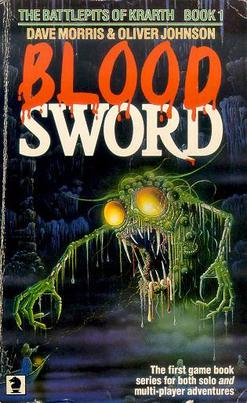
Blood Sword is a series of gamebooks created by Oliver Johnson and Dave Morris and published by Knight Books in the late 1980s. The books were illustrated by Russ Nicholson and the maps supplied by Geoff Wingate. It was set in the authors' own fantasy world of "Legend" which was also the setting for their Dragon Warriors role playing game.

Hitler's War is a strategic level World War II war game for 2 or 3 players, first published by Metagaming Concepts in 1981, and then by Avalon Hill in 1984.
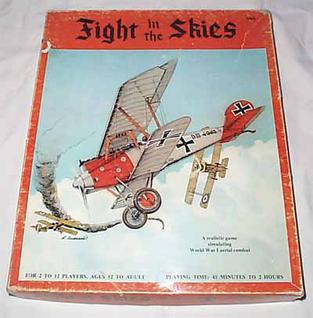
Fight In The Skies, also known as Dawn Patrol, is a board wargame first self-published by creator Mike Carr in 1966, then published by Guidon Games in 1972 and TSR in 1975. The game simulates World War I style air combat, and is the only game to appear on the event schedule of every Gen Con convention since Gen Con I.
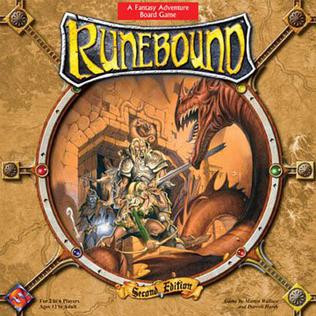
Runebound is a high fantasy adventure board game created by Martin Wallace and Darrel Hardy and published by Fantasy Flight Games in 2004. A second edition was published in 2005. A third edition was released in 2015. In Runebound, one to six players take the roles of adventurers who seek out quests. The quests are then resolved with either victory for the player, or a loss of some item. Each player is seeking quests and trying to gain experience which results in greater power and combat skill.
Bradley W. Schenck is an American artist and game designer.

Player's Option: Combat & Tactics is a supplemental sourcebook to the core rules of the second edition of the Advanced Dungeons & Dragons fantasy role-playing game. This 192-page book was published by TSR, Inc. in 1995. The book was designed by L. Richard Baker III and Skip Williams. Cover art is by Jeff Easley and interior art is by Doug Chaffee, Les Dorscheid, Larry Elmore, Ken and Charles Frank, Roger Loveless, Erik Olson, and Alan Pollack.
Khans of Tarkir is a Magic: The Gathering block consisting of Khans of Tarkir, Fate Reforged, and Dragons of Tarkir. The block's setting is based on a mix of cultures of Central and East Asia.
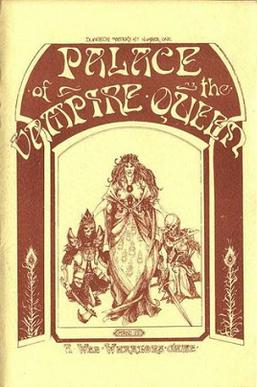
Palace of the Vampire Queen is a fantasy role-playing game adventure published by Wee Warriors in 1976 that uses the rules of Dungeons & Dragons, despite not being licensed by TSR, the creators of D&D. It is notable for being the first stand-alone role-playing adventure to be published.

Chitin: I is a science fiction microgame published by Metagaming Concepts in 1977 in which bands of intelligent insects vie for resources.
The Endless Dungeon is a supplement for fantasy role-playing games published by Wee Warriors in 1977.

Labyrinthine is a fantasy board game published by Wee Warriors in 1977. Based on themes taken from the then-newly published Dungeons & Dragons, Labyrinthine was the first "dungeon crawler" board game to use a totally modular board that was reconfigured for each game.

Dragonlance is a fantasy board game published by TSR in 1988 that is based upon the fantasy role-playing campaign setting Dragonlance, also published by TSR.
References
- 1 2 Shannon Appelcline (2014). Designers & Dragons: The '70s. Evil Hat Productions. ISBN 978-1-61317-075-5.
- ↑ "Brett's Blog".
- 1 2 3 4 5 Williams, Glenn (August 1978). "Dragonlord". Dragon (17). TSR, Inc.: 5.